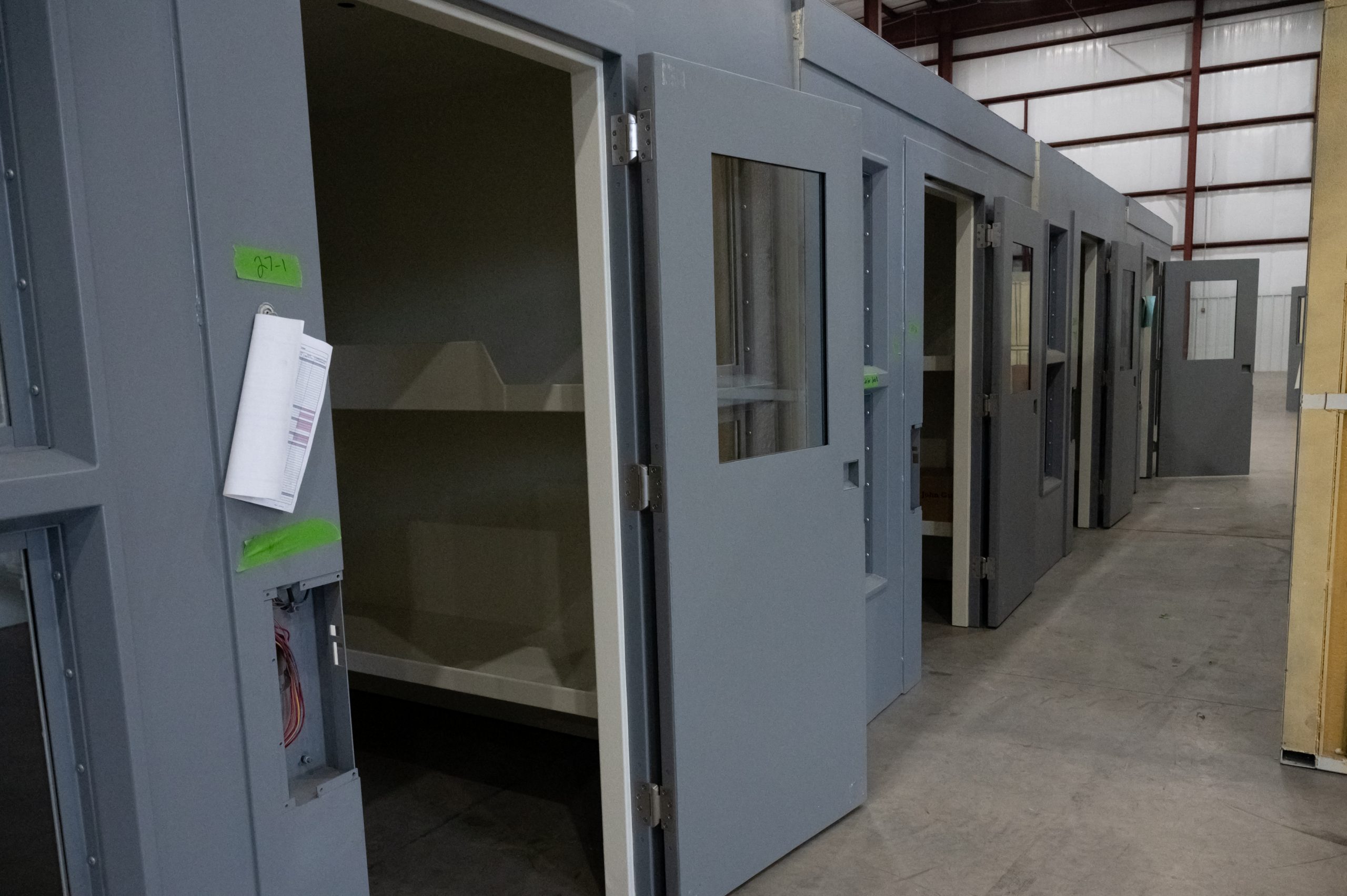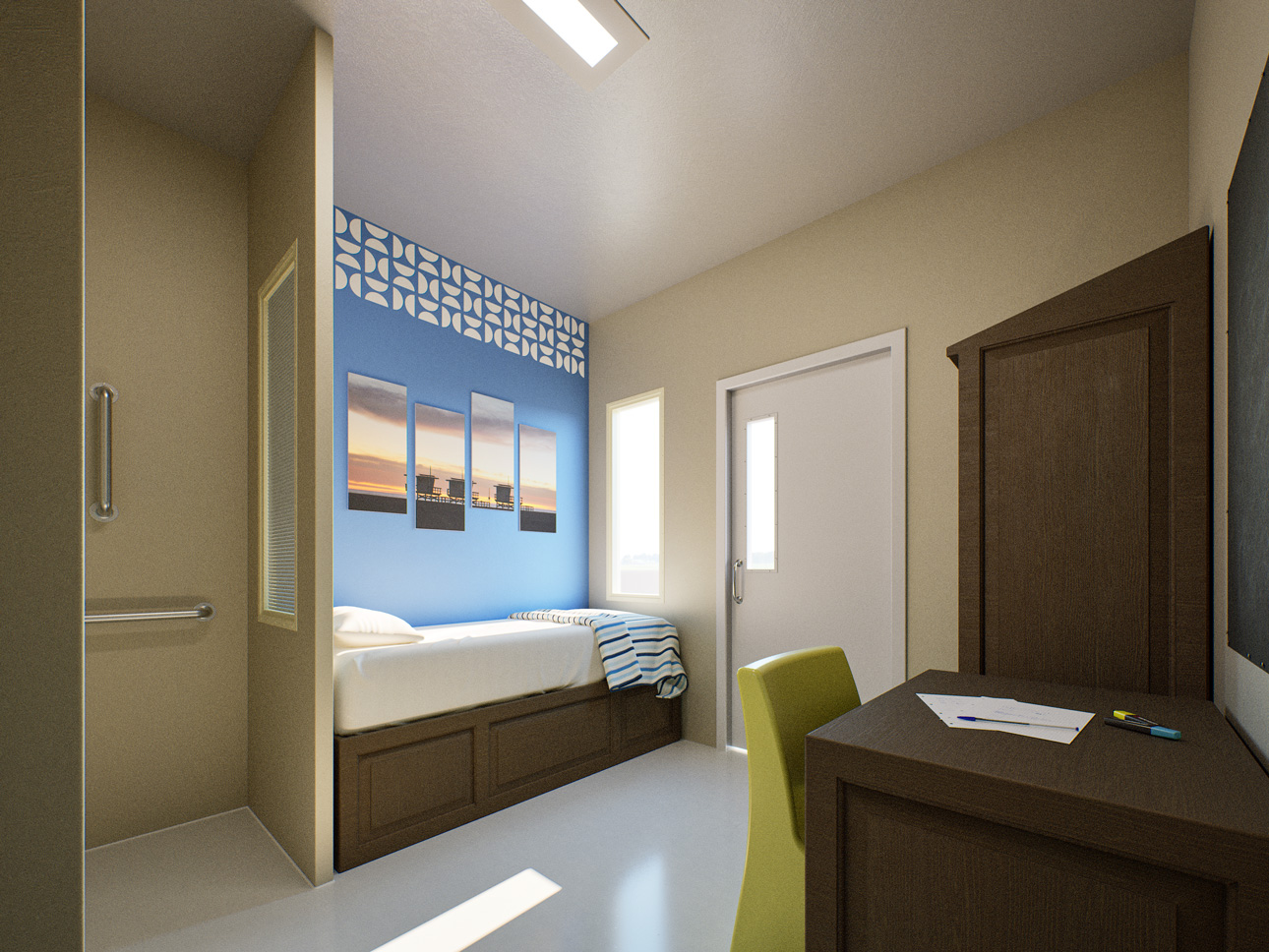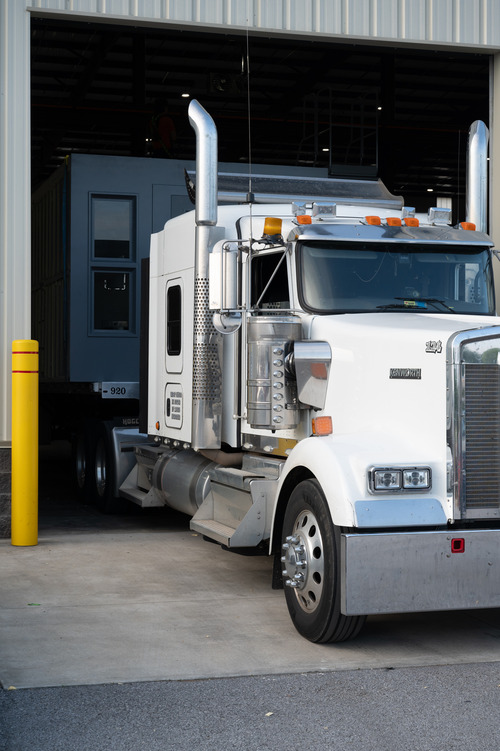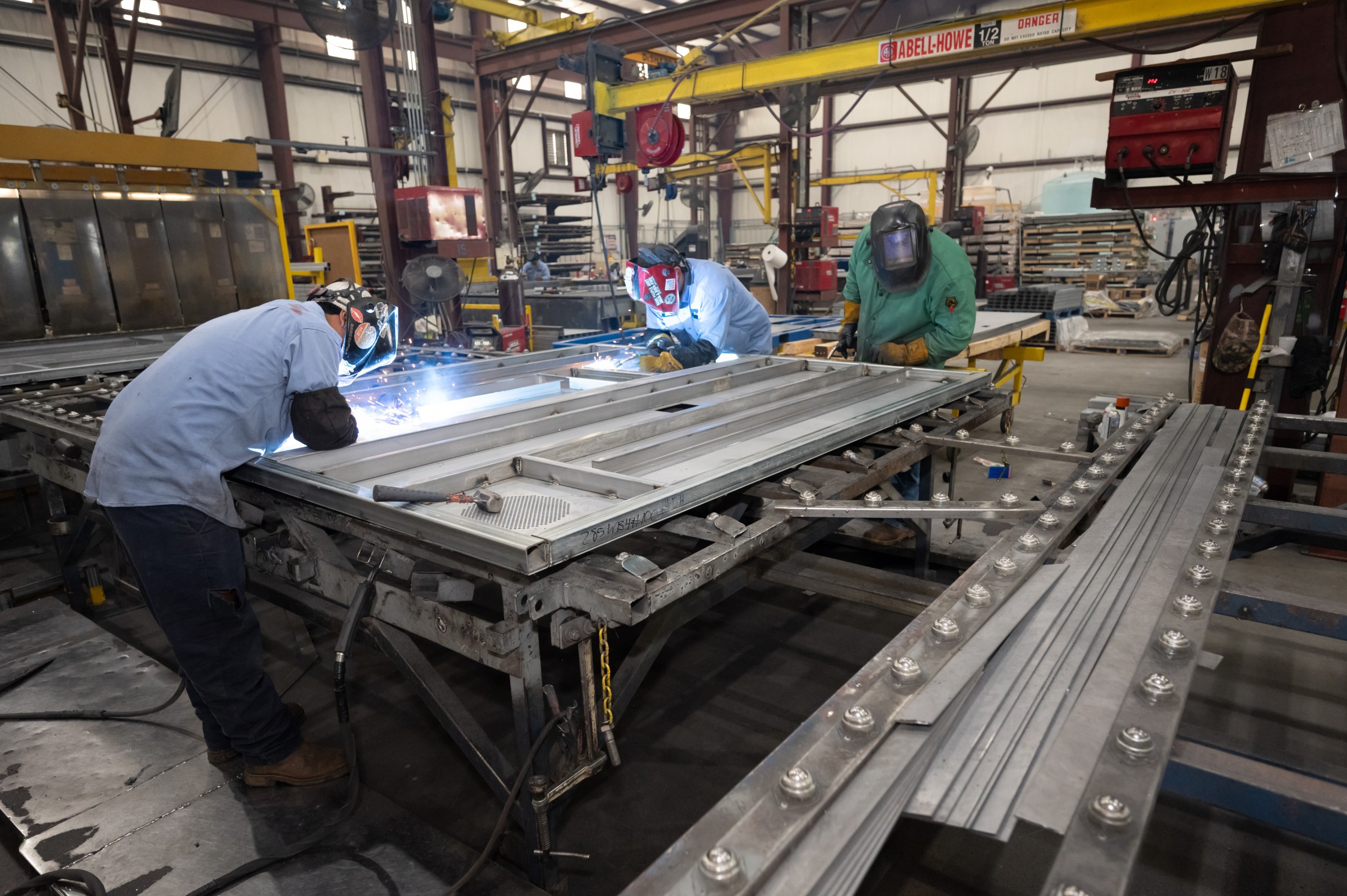Detention Cell Manufacturers: Top Providers and Industry Standards
Detention cell manufacturers play a crucial role in ensuring the safety and security of correctional facilities. These manufacturers design and produce cells that meet strict safety and compliance standards to keep both inmates and staff safe.
The process of developing these cells involves not only creating durable and secure structures but also complying with various regulations and standards.
Detention cells come in different types, each designed to meet specific needs and security levels.
From solitary confinement cells to general population cells, the materials used in their construction are chosen for their strength and durability.
Innovations in this field have led to advancements in design and construction methods, ensuring that the cells are not only secure but also humane and sustainable.
Ethical considerations are fundamental in the design and manufacturing of detention cells. Manufacturers must balance the need for security with the rights and dignity of inmates.
Regular maintenance and proper installation are critical to the longevity and effectiveness of these cells.
By understanding the complexities involved in the manufacturing and maintenance of detention cells, facilities can better ensure the safety and security of everyone involved.
Key Takeaways
- Manufacturers must design cells that meet strict safety and compliance standards.
- Various types of detention cells are created to serve different security levels.
- Ethical considerations are essential in balancing security with inmates’ rights and dignity.
History of Detention Cell Manufacturing
The history of detention cell manufacturing includes the transformation of confinement practices and significant technological advancements in cell design.
Evolution of Detainee Confinement
Prisons have evolved from simple holding structures to complex institutions.
Early detention cells were often rudimentary, focusing primarily on containment with little regard for the well-being of prisoners. These cells lacked proper sanitation and were built with basic materials like wood and stone.
By the 19th century, efforts to humanize prison conditions began. Cells were designed to be more secure and humane.
The shift included the use of metal bars and the construction of more durable facilities. Notable changes included better ventilation and natural light to improve living conditions for inmates.
In the 20th century, the prison system saw further changes with the involvement of private companies in designing and building detention cells.
This era marked the beginning of the use of modern materials like reinforced concrete and steel, enhancing both the security and durability of prison facilities.
The trend towards privatization also introduced economic considerations in the construction and maintenance of detention cells.
Technological Advancements in Cell Design
Technological advancements have greatly impacted the design of detention cells.
In the early stages, cells were basic and focused only on security.
As technology progressed, features such as electronic locking systems and surveillance cameras became standard, ensuring better monitoring and control.
Materials used in cell construction have also evolved.
High-strength alloys and polycarbonate materials are now commonly used to create cells that are both secure and resistant to tampering.
These advancements ensure the safety of both inmates and staff.
Specialized designs have been developed for different types of inmates, including high-security cells for violent offenders and medical isolation units for those with health issues.
These varied designs reflect a more nuanced approach to incarceration, taking into account the specific needs of different detainee populations.
The incorporation of smart technology, such as automated door systems and real-time surveillance, further enhances the functionality of modern detention cells.
These innovations have made detention facilities more secure and efficient, highlighting the continuous evolution of the industry.
Types of Detention Cells
Detention cells vary based on their intended use and security requirements. Each type, from temporary holding cells to maximum security units, serves a specific function in maintaining order and safety within correctional and detention facilities.
Temporary Holding Cells
Temporary holding cells are designed for short-term confinement, often used in police stations and court buildings. These cells are intended to hold individuals for hours or a few days until they are either released or moved to a more permanent facility.
The design prioritizes simplicity and durability, with minimal furnishings and robust materials to prevent damage or escape attempts.
High visibility for monitoring detainees is crucial to ensure safety and manage behavior effectively.
Maximum Security Cells
Maximum security cells are meant for inmates classified as high-risk due to their criminal history or behavior. These cells provide enhanced security features to prevent escapes and protect staff and other inmates.
Construction often includes reinforced materials like steel and concrete. The layout restricts movement and limits contact with other detainees.
Monitoring technology, such as cameras and sensors, is integrated to maintain constant surveillance and ensure the safety of both inmates and guards.
Solitary Confinement Cells
Solitary confinement cells isolate individuals for disciplinary reasons or to protect them from others. The design focuses on preventing self-harm and maintaining strict control over the inmate’s environment.
These cells are small, often windowless, with limited furnishings. The door may have a slot for delivering food and communicating with the inmate without opening it.
Solitary confinement is a controversial practice due to its psychological impact, but it remains a tool for maintaining order in correctional settings.
Police and Military Detention Cells
Police and military detention cells serve functions similar to civilian holding cells but are used by law enforcement and military authorities.
These cells often detain suspects and short-term convicts, emphasizing security and control.
Built for robust use, these cells feature strong materials and basic accommodations.
Prefabricated modular units can be employed to streamline construction and ensure uniformity in security standards.
These units are customizable to meet the specific needs of different jurisdictions, providing an efficient and cost-effective solution for detention infrastructure.
Material Specifications
Choosing the right materials for detention cells involves understanding the properties and suitability of various materials. Key considerations include strength, durability, transparency, and safety.
Steel and Reinforced Concrete
Steel and reinforced concrete are essential for ensuring the structural integrity of detention facilities.
Steel is preferred due to its high tensile strength, making it difficult to breach. It can absorb and dissipate impacts effectively.
Meanwhile, reinforced concrete, which incorporates steel bars, offers excellent load-bearing capacity.
Using reinforced concrete reduces the likelihood of structural failures. This combination of materials is resilient to tampering and provides a secure barrier.
Specifications often require precise grades of steel and concrete to meet rigorous standards.
Proper maintenance of these materials is critical to prevent corrosion and maintain security.
Transparent Materials
Transparent materials like polycarbonate and reinforced glass are used to ensure visibility while maintaining security.
Polycarbonate is favored for its impact resistance and shatterproof properties. It can withstand significant force without breaking, making it ideal for windows and viewing panels.
Reinforced glass is another option, often used in high-risk areas. It combines multiple layers of glass and plastic, ensuring it won’t shatter upon impact.
These materials are crucial for monitoring inmates while preventing escape attempts.
Regular inspections are necessary to ensure these materials remain intact and effective over time.
Non-toxic Materials
Non-toxic materials are vital to prevent harm to inmates and staff.
Non-toxic paints and coatings are applied to walls and fixtures to avoid exposure to harmful chemicals.
These paints must comply with health regulations and minimize volatile organic compounds (VOCs).
Furniture and bedding in detention cells are often made from non-toxic, flame-retardant materials.
This reduces the risk of fire hazards and ensures a healthier environment. The use of hypoallergenic materials prevents allergic reactions and other health issues.
Ensuring all materials meet stringent safety standards is a key aspect of facility management.
Design and Construction Considerations
These considerations highlight the importance of modular cell systems and custom designs to meet the needs of specific facilities. Specializing in these areas ensures efficiency and adaptability in correctional settings.
Modular Cell Systems
Modular cell systems are a key choice in modern detention construction.
They allow for faster building times and cost savings.
Many manufacturers use pre-manufactured or prefabricated units to cut down on labor and material expenses.
This approach significantly reduces the construction timeline and improves quality control because the cells are built in a controlled environment.
These systems can be customized to fit various security levels and facility requirements.
Prefabricated units are built to meet national and local correctional standards, ensuring safety and security.
This means that cells are designed with features like reinforced walls, tamper-resistant fixtures, and integrated security technology.
Since they are modular, these cells can be easily expanded or modified as needed, making them a flexible solution for growing correctional facilities.
Customization for Specific Facilities
Customization is vital for addressing the unique needs of different detention facilities.
Each facility has different security, capacity, and layout requirements.
Manufacturers collaborate with architects and contractors to create designs that match these needs precisely.
For example, youth detention centers will have different design considerations than maximum-security prisons.
Special designs can include varied layouts, specialized materials, and specific security features to meet the facility’s purpose.
For instance, some facilities may require enhanced surveillance systems or different types of cell door mechanisms.
It’s also common to see variations in cell size, common areas, and recreational spaces, all tailored to the population they serve.
This level of customization ensures that every detail, from inmate safety to operational efficiency, is addressed.
Safety and Compliance Standards
Detention cell manufacturers are required to adhere to international safety standards and maintain rigorous quality assurance practices to ensure the safety and reliability of their products. This section covers the essential guidelines and measures they follow.
International Standards
Manufacturers must comply with various international standards for safety and security.
These include guidelines set by bodies such as the International Organization for Standardization (ISO) and standards specific to detention facilities.
ISO standards ensure that materials used are durable and tamper-proof.
Detention cells must also meet specific fire safety regulations to prevent hazards.
Regional standards can also apply.
In the U.S., for example, the National Institute of Justice (NIJ) provides standards for various aspects of detention facilities, including structural integrity and emergency protocols.
Adherence to these standards helps prevent escape and ensures the well-being of both inmates and staff.
Quality Assurance
Quality assurance in detention cell manufacturing involves multiple stages to ensure product reliability and safety.
Regular inspections and tests are conducted to meet both structural and security requirements.
First, raw materials are tested for compliance with safety standards.
These include tests for strength, durability, and resistance to tampering or corrosion.
During production, each component undergoes rigorous checks.
Locks, for instance, are permanently marked and tested for reliability under stress conditions.
Final inspections focus on comprehensive safety evaluations, including tests for fire resistance and emergency exit readiness.
Only after passing all these checks are the products cleared for use in detention facilities.
Innovations in Detention Cell Manufacturing
Recent advancements in detention cell manufacturing focus on integrating smart technology and enhancing safety features to prevent incidents like suicide.
Smart Cells
Smart cells incorporate advanced technology to monitor inmates and provide a safer environment.
These systems use sensors and cameras to track movements and detect unusual behavior. Real-time data can alert officers to potential issues, allowing for quicker response times.
In addition to surveillance, smart cells can control lighting, temperature, and other environmental factors through interconnected systems.
This reduces the need for manual adjustments and improves overall living conditions for inmates.
Implementing smart cells also includes using materials that resist tampering and ensure durability.
These materials can withstand harsh conditions and reduce maintenance costs over time.
Suicide Prevention Features
Detention cells now include specific design elements to prevent suicide. These features are crucial. Given that suicide remains a significant concern in correctional facilities.
For example, rounded furniture and fixtures eliminate anchor points where inmates might attempt to hang themselves. Beds and other fixtures are often integrated into the walls to avoid loose objects that could be misused.
Additionally, cells may use shatterproof windows and tamper-resistant materials to minimize the risk of self-harm. Monitoring technology, including motion sensors and cameras, helps staff quickly identify and respond to suspicious activity.
These innovations aim to create a safer, more secure environment for both inmates and staff, minimizing the risk of tragic incidents.
Ethical Considerations
Detention cell manufacturers must prioritize respecting human rights and ensuring humane treatment of detainees. Ethical manufacturing involves meeting international standards and addressing potential human rights issues.
Human Rights Compliance
Manufacturers need to comply with international human rights standards. These include guidelines from the UN and the European Convention on Human Rights. Cells must be designed to be safe, with adequate space, light, and ventilation. Maintaining legal standards helps avoid inhumane conditions. They must employ monitoring mechanisms to prevent abuses. Reports and audits ensure manufacturers follow ethical practices.
Treatment of Detainees
The design should promote the well-being of detainees. Access to basic needs like clean water, food, and hygiene is critical. Cells should avoid cruel or degrading conditions. Proper sanitation facilities must be included. Psychological effects are considered; cells should not cause undue stress or harm. Manufacturers’ ethical duty is to support humane treatment.
Procurement Process for Detention Cells
The procurement process for detention cells involves tendering and contracts, and supplier evaluation criteria. It is crucial for facilities to find qualified manufacturers who meet specific standards and criteria to ensure safety and security.
Tendering and Contracts
Procurement begins with tendering. Here, detention facilities or managing bodies invite bids from manufacturers. The invitation to tender (ITT) includes detailed specifications for the detention cells, such as size, materials, and security features.
Potential suppliers respond with proposals outlining their offerings and pricing. These proposals are assessed based on compliance with the ITT requirements. Contracts are then negotiated and formed, detailing the scope of supply, timelines, costs, and quality assurances. This step ensures that all parties understand their responsibilities and the project requirements.
Supplier Evaluation Criteria
Suppliers are evaluated based on several criteria to ensure they can meet the facility’s needs. Safety and quality standards are paramount, as detention cells must be secure and durable. Suppliers must provide proof of their compliance with relevant safety regulations and industry standards.
Experience and past performance are also important. Facilities prefer working with manufacturers who have a proven track record in producing high-quality detention cells. Additionally, safety certifications and client references are considered.
Cost-effectiveness is another key factor. While quality and safety cannot be compromised, finding a supplier who offers competitive pricing is essential for budget management.
Always look into suppliers offering after-sales support and maintenance services, ensuring long-term reliability and performance of the detention cells. These criteria help ensure that the procurement process results in high-quality, secure, and cost-effective detention solutions.
Installation and Maintenance
Proper installation and consistent maintenance of detention cell systems are critical for their effectiveness and longevity. These processes ensure that security is maintained, and any issues are promptly addressed.
Professional Installation Services
Hiring professionals for the installation of detention cell systems is essential. Professionals ensure that all components, from locks to monitoring equipment, are installed correctly. This minimizes the risk of malfunctions and enhances security.
Detention cell installations usually include bolts, locks, and electronic monitoring systems. Technicians often have to attend training sessions to stay updated on the latest installation techniques and security standards.
Many service providers offer warranty periods. During these periods, they address any installation errors at no extra cost. This guarantees that the security mechanisms are working as intended from day one.
Long-term Maintenance Plans
Long-term maintenance helps in keeping detention facilities secure and operational. Scheduled inspections are necessary to spot any wear and tear in the locks and monitoring systems. Maintenance teams check for any software updates for electronic systems and ensure they are installed promptly.
Routine tasks often include cleaning and lubricating locks, testing backup power supplies for the monitoring systems, and replacing worn-out parts. Some manufacturers offer maintenance contracts, where they take responsibility for regular upkeep, reducing the burden on the facility’s staff. This proactive approach prevents potential security lapses and prolongs the equipment’s lifespan.
International Trade and Market Trends
The global trade of detention cell products is influenced by various factors. Key areas to focus on include export and import statistics and emerging markets.
Export and Import Statistics
Detention cell manufacturing is a booming industry, particularly in countries like the United States and China. The demand for advanced security features has led to significant exports from these regions to countries in need of updating their detention facilities. For instance, the US has shown substantial growth in both production and technology within this sector.
Countries exporting detention cell products:
- United States
- China
- Germany
Countries importing detention cell products:
- Brazil
- India
- South Africa
Export data indicates that high-security features and technological advancements are primary factors driving international trade. The complexity and standards required for these products necessitate specialized manufacturing facilities, mostly located in developed countries.
Emerging Markets
Emerging markets for detention cell products are expanding, particularly in regions experiencing political instability or rising crime rates. These markets are looking to modernize their facilities and improve security measures.
Notable emerging markets:
- Southeast Asia: Countries like Indonesia and Thailand are investing in new prison infrastructure.
- Africa: Nations such as Nigeria and Kenya are increasing their purchases due to growing urban populations and security concerns.
In these emerging regions, there is a push for cost-effective yet secure detention solutions. Manufacturers are tailoring their products to meet the specific needs of these markets, including modular cells and scalable security systems. The focus is on blending affordability with advanced features.
Detention Cell Decommissioning and Disposal
Detention cell decommissioning involves several steps to ensure safety and compliance with regulations. Basic steps include:
- Inspection: Checking the structural integrity and ensuring no hazardous materials are present.
- Dismantling: Safely taking apart the cell structures.
- Disposal: Properly disposing or recycling materials.
In some cases, decommissioned cells are repurposed. For instance, at the Hakea Prison, old cells were used as temporary prison cells to manage overcrowding.
Methods of Disposal
- Recycling Metals: Metal parts can be melted down and reused.
- Landfill: Non-recyclable parts may be sent to landfills.
- Special Waste Facilities: Handling hazardous materials in designated facilities.
Challenges
- Cost: Decommissioning can be expensive.
- Regulations: Compliance with local and international laws.
- Hazardous Materials: Safe disposal of materials like asbestos.
Examples:
- Some detention centers have decommissioned cells to mitigate overcrowding issues.
- Environmental considerations involve recycling and special waste management.
Effective decommissioning ensures safety and minimizes environmental impact.



